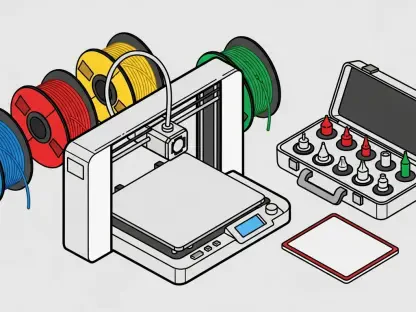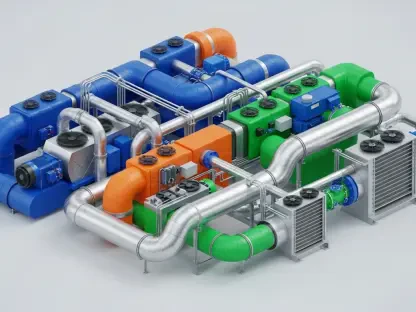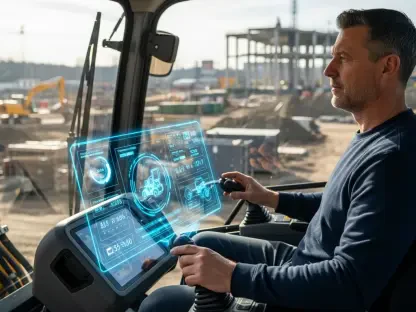Toyota Motor Europe has embarked on a transformative journey that could redefine the automotive industry’s approach to sustainability, starting with the launch of its pioneering Toyota Circular Factory (TCF) at the Toyota Manufacturing UK facility in Burnaston, Derbyshire. This initiative goes far beyond simply dismantling old cars; it represents a fundamental shift toward a circular economy where materials from end-of-life vehicles (ELVs) are repurposed into resources for future production. With environmental challenges mounting and the pressure to reduce carbon footprints intensifying, Toyota’s bold move addresses a critical gap in the lifecycle of automobiles. Their goal is not just to recycle but to create a seamless loop of resource recovery that minimizes waste and dependency on virgin materials. This ambitious project aligns with stringent environmental targets, positioning Toyota as a leader in sustainable practices within Europe. As this innovative effort unfolds, it offers a glimpse into how the industry might evolve to meet global demands for greener solutions.
Driving a Circular Economy in Automotive Recycling
Toyota’s vision for the TCF centers on establishing a closed-loop system that transforms the way materials from dismantled vehicles are handled, ensuring they are reused or recycled directly into the production of new cars. Unlike traditional dismantling operations that often focus solely on profiting from spare parts or scrap metal, Toyota prioritizes reducing waste and curbing reliance on raw, unprocessed resources. This approach dovetails with their broader environmental commitments, which include slashing CO2 emissions across their European vehicle lineup by 100% by 2035 and achieving full carbon neutrality by 2040. The Burnaston facility is equipped to process up to 10,000 vehicles each year, recovering substantial quantities of materials such as 120,000 reusable parts, 300 tons of high-purity plastic, and 8,200 tons of steel. By categorizing resources into reusable components, remanufacturable items like batteries, and recyclable materials including aluminum and copper, Toyota ensures a comprehensive recovery process that significantly lowers environmental impact.
The implications of Toyota’s circular economy model extend beyond immediate resource recovery, offering a blueprint for long-term sustainability in the automotive sector. By feeding recycled materials back into their supply chain, the company mitigates the volatility of raw material markets and reduces the ecological footprint associated with mining and processing virgin resources. This strategic focus also supports resilience against supply chain disruptions, a growing concern in today’s global economy. At the TCF, every dismantled vehicle becomes a source of value, with materials meticulously sorted and validated for reuse or recycling. Reusable parts are reintroduced to the market through distributors, while raw materials substitute for new inputs in manufacturing. This systematic approach not only aligns with regulatory pressures for lower emissions but also positions Toyota as a forward-thinking player in an industry increasingly defined by environmental responsibility, potentially inspiring others to adopt similar practices.
Reimagining Dismantling with Proven Production Principles
A defining feature of Toyota’s sustainable dismantling initiative is the innovative adaptation of the Toyota Production System (TPS), traditionally used to enhance manufacturing efficiency, to the disassembly process at the TCF. Known for principles like Just-In-Time production and Kaizen (continuous improvement), TPS is applied in reverse at Burnaston to optimize the breakdown of vehicles with precision and minimal waste. The facility operates an eight-pitch dismantling line with a fixed tact time, allowing one vehicle to be processed every three hours. This structured rhythm maximizes efficiency while significantly reducing the space required for operations. By prioritizing process perfection over immediate technological investment, Toyota keeps startup costs manageable, focusing instead on refining workflows to ensure scalability and adaptability as the initiative grows across different regions.
Safety and human-centric values are deeply embedded in Toyota’s dismantling operations, reflecting a commitment to worker well-being alongside operational excellence. The application of TPS principles such as Jidoka, which combines automation with human oversight, ensures that processes are continuously monitored and improved without compromising safety standards. The emphasis on standardized work practices fosters an environment where incremental enhancements, driven by Kaizen, can boost resource recovery and profitability without additional labor demands. This meticulous balance of efficiency and responsibility underscores Toyota’s broader ethos of respect for people, ensuring that no worker is put at risk during the dismantling process. By integrating these time-tested methodologies into an entirely new context, Toyota not only streamlines ELV handling but also sets a precedent for how industrial innovation can harmonize with social and environmental priorities in the automotive sector.
Building a Scalable Model for Global Impact
Toyota envisions the TCF as a global center of excellence, with aspirations to replicate and expand similar dismantling operations across Europe while forging partnerships with organizations that share their commitment to sustainability. Standardizing practices and elevating the professionalism of the dismantling industry are key objectives, though navigating the diverse regulatory landscapes of European countries presents notable challenges. Leadership at Toyota, exemplified by Vice President Leon van der Merwe’s public calls for collaboration, recognizes that achieving true circularity requires a collective effort beyond the capabilities of a single company. By fostering alliances with like-minded entities, Toyota aims to create a unified front that can address regulatory hurdles and drive widespread adoption of sustainable dismantling practices, amplifying the impact of their initiative on a continental scale.
The scalability of Toyota’s model hinges on its ability to balance innovation with practical implementation, ensuring that the principles applied at Burnaston can be adapted to varying regional needs and constraints. The focus on human-centric processes remains a cornerstone, with safety protocols integrated into every aspect of operations to maintain an “absolute safety” mindset. Continuous improvement, guided by TPS methodologies, allows for ongoing refinements that enhance efficiency without sacrificing worker well-being. As Toyota works to expand this initiative, the emphasis on collaboration and shared goals highlights a proactive stance toward shaping the future of automotive end-of-life management. This strategic vision not only positions Toyota as a trailblazer but also challenges the industry to rethink traditional practices, paving the way for a more sustainable and interconnected approach to resource recovery and environmental stewardship.
Pioneering a Sustainable Legacy
Reflecting on Toyota’s groundbreaking efforts at the Burnaston facility, it’s evident that the Toyota Circular Factory marks a pivotal moment in the automotive industry’s shift toward sustainability. The integration of TPS principles into dismantling processes showcases a remarkable fusion of efficiency and environmental responsibility, with thousands of vehicles processed and vast quantities of materials recovered for reuse. Industry experts laud this innovative approach, recognizing its potential to inspire similar initiatives worldwide. As Toyota navigates regulatory challenges and builds partnerships, their commitment to circularity lays a robust foundation for future advancements. Looking ahead, the focus should remain on scaling these practices through collaborative frameworks, investing in adaptive technologies, and advocating for unified standards across regions. This legacy of innovation offers a clear path for tackling resource scarcity and emissions pressures, urging stakeholders to prioritize sustainable solutions in every facet of the automotive lifecycle.









